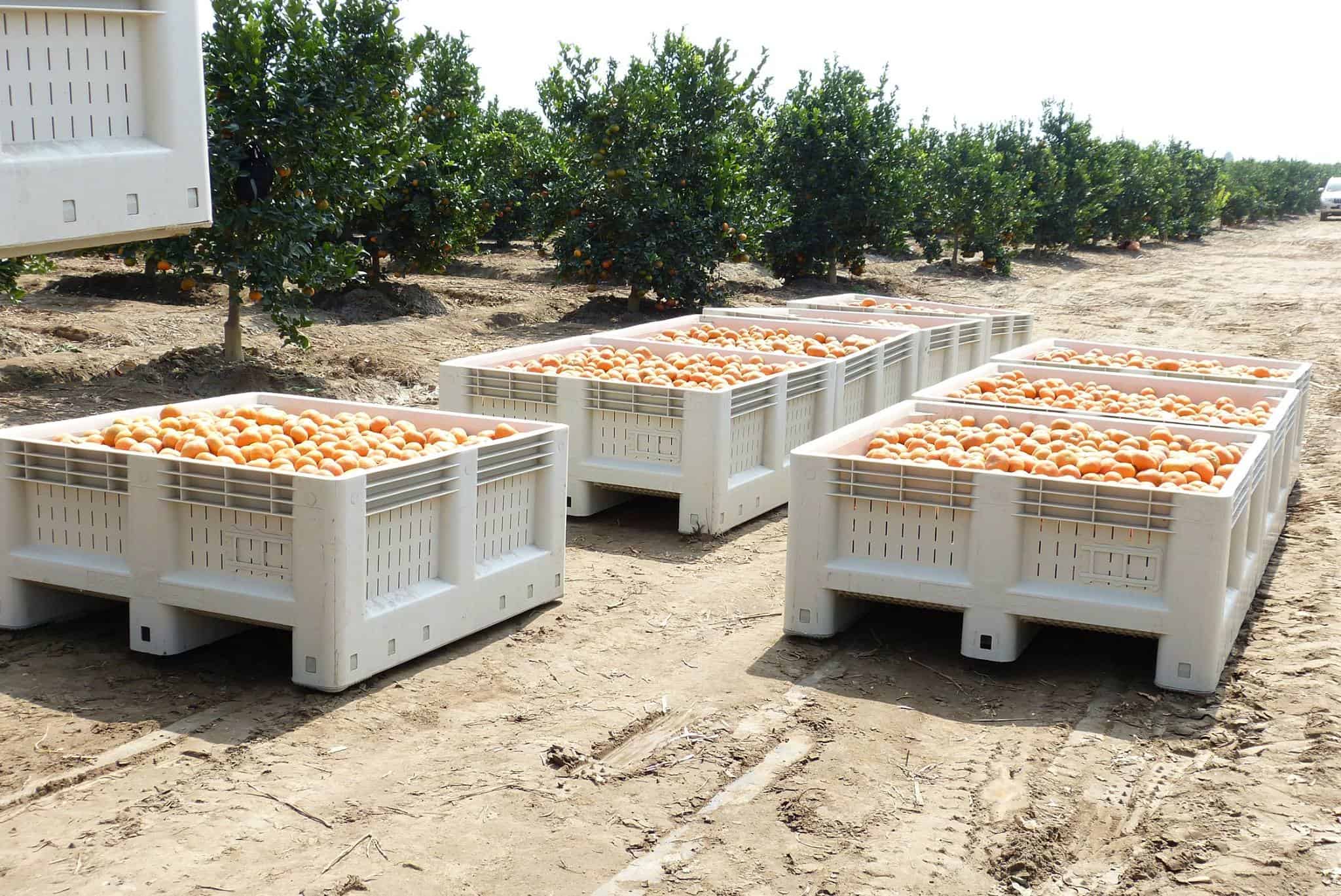How to Implement Reusable Packaging into Your Supply Chain
You’re ready to switch to reusable packaging—now what?
The benefits are clear: lower costs, greater efficiency, and better product protection. But making the switch requires a solid plan. This 7-step guide will help you implement reusable packaging to streamline operations and maximize savings.

Step 1: Assess Your Current Packaging System
Before making the switch to reusable packaging, start with a packaging audit to understand your current processes and identify areas for improvement. Focus on these key areas:
- Materials Used: What types of packaging do you currently rely on? (e.g., wood pallets, cardboard boxes, single-use plastic containers)
- Costs: How much are you spending on packaging—purchasing, replacing, and disposing of materials?
- Lifespan & Waste: How often do you replace packaging, and how much waste does it generate?
- Supply Chain Efficiency: Are there inefficiencies where reusable transport packaging could streamline operations?
This assessment will highlight areas where switching to reusable packaging can provide the biggest return on investment (ROI).
Step 2: Partner with a Reliable Reusable Packaging Supplier
Choosing the right supplier ensures you get high-quality, industry-specific reusable packaging. Look for a partner that offers:
- Durability & Reusability: Packaging made from materials that can withstand frequent use and cleaning.
- Customization: Tailored packaging designed to meet unique product requirements.
- Reverse Logistics Programs: Options to return, refurbish, or recycle packaging at the end of its lifecycle.
For some companies, the right packaging partner is one that shares their vision—like the collaboration between Heliene and PVpallet. For others, it’s about finding a consultative partner who can guide them through the process. No matter the approach, the key is to choose a partner that aligns with your needs and can support your long-term packaging strategy.
Step 3: Choose the Right Reusable Packaging
Selecting the right reusable packaging depends on your industry’s specific needs. Consider:
- Plastic Pallets: A durable, sustainable alternative to wood pallets with a longer lifespan and lower maintenance costs. Plastic pallets resist moisture, pests, and contamination, making them ideal for food processing, pharmaceuticals, and export compliance. Their uniform weight and dimensions also reduce inconsistencies in automated systems.
- Bulk Bin Containers: Perfect for transporting and storing large quantities of goods in agriculture, manufacturing, and distribution. Bulk containers and harvest bins protect products from contamination, minimize handling damage, and can be stacked to maximize storage efficiency.
- Handheld Totes: Designed for organizing small components in warehouses and retail distribution centers. Totes improve efficiency by standardizing material handling, reducing pick-and-pack errors, and optimizing space utilization.
- Custom Packaging: Essential for unique or fragile products that require specialized protection. Custom solutions like dunnage and container inserts reduce damage rates and enhance part safety.
Remember: One size doesn’t have to fit all. John Deere sets a great example of a strategic approach to reusable packaging. With over 1.5 million reusable containers in circulation, they use a combination of standard bulk bins with custom dunnage and fully custom packaging. By assessing each product and part individually, they’ve optimized protection, efficiency, and sustainability across their supply chain.

Step 4: Integrate IoT Tracking Technology
Tracking returnable containers is key to optimizing reusable packaging flow, reducing losses, and enhancing supply chain visibility. Common tracking technologies include:
- RFID Tracking: Uses electromagnetic fields to monitor assets. For example, John Deere tracks 1.5 million returnable packaging units globally with RFID, tagging each container and monitoring them via an internet-based system. This improves asset management across their supply chain.
- Barcode Scanning: A cost-effective, manual solution requiring line-of-sight scanning. Though less efficient than RFID, it’s often preferred by companies with smaller quantities of reusable packaging assets.
- GPS Tracking: Best for long-haul shipments of high-value packaging, providing real-time location data to ensure secure, efficient transport.
Benefits of Tracking Technology:
- Fewer Packaging Losses: Improved asset tracking reduces misplaced or lost containers.
- Better Inventory Management: Real-time tracking prevents overstocking and ensures availability.
- Labor Efficiency: Automated tracking cuts manual counting efforts.
- Cost Savings: Reduced returnable container losses lead to lower operational expenses.
Insights from Utility-Scale Solar Installations
Reusable packaging offers significant advantages for a range of industries and applications, including utility-scale solar projects:
- Sustainability: Reusable packaging reduces waste and aligns with environmental goals.
- Efficiency: Durable packaging minimizes damage and waste disposal efforts.
- Cost Savings: Decreased waste disposal fees and reduced product damage lead to substantial cost savings.
For example, Premier PV, a solar eBOS manufacturer, integrated reusable packaging into their operations, effectively reducing waste and improving sustainability on remote utility-scale job sites.
Why Returnable Container Tracking Matters
Container losses of 3% to 10% annually can be significantly reduced with tracking solutions, resulting in cost savings, improved efficiency, and better inventory visibility. By integrating IoT (Internet of Things) technologies like RFID, barcode scanning and GPW, businesses can also lower expedited shipping costs, reduce the need for new fleets, and optimize logistics for a more sustainable and efficient supply chain.
Step 5: Trial Reusable Packaging in a Closed-Loop System
A closed-loop packaging system is the ideal starting point for integrating reusable packaging into your supply chain. It ensures packaging materials are consistently recovered, reused, and kept in circulation, minimizing waste and improving overall cost efficiency. Identifying the right components and setting up the key elements for a closed-loop system is crucial for ensuring a successful trial run before scaling it across your supply chain.
Key Elements of a Closed-Loop System
- Efficient Return Process: Packaging should be collected, inspected, and reintroduced into the supply chain. This process reduces waste, extends the life of assets, and ensures that materials remain in use for as long as possible. Having a clear and structured return process is essential for maintaining continuous circulation.
- Standardization: Standardized packaging solutions such as uniform containers and pallets help simplify logistics and improve compatibility across various stages of the supply chain. Using standardized packaging reduces complexity, streamlines inventory management, and increases operational efficiency. For example, some companies have found success by adopting standardized reusable packaging, improving both logistics and the reusability of packaging materials.
- Tracking Integration: To manage reusable packaging effectively, integration of RFID, barcodes, or other tracking technologies is crucial. These tools help monitor packaging movement, improve visibility, and prevent loss, allowing businesses to keep track of packaging through every phase of the supply chain.
- Logistics Coordination: Successful logistics coordination is vital for a closed-loop system. A well-structured retrieval and redistribution process ensures that packaging is efficiently recovered and reused. Proper coordination improves overall supply chain operations, from shipping to storage, minimizing delays and costs.
- Supplier & Partner Involvement: A closed-loop system thrives when all stakeholders—such as suppliers and logistics partners—are aligned and committed to the system's goals. Engaging with suppliers that understand and support sustainable packaging solutions ensures smoother packaging recovery and enhances the efficiency of the entire supply chain.
Setting Up a Successful Trial
To successfully implement reusable packaging, begin by testing a closed-loop system on a small scale:
- Select a Pilot Product Line or Location: Choose one product line or a single warehouse location to run the trial. This allows you to test the system's feasibility in a controlled environment before expanding.
- Choose Appropriate Reusable Packaging: Select durable, standardized packaging solutions that suit your supply chain needs.
- Implement Tracking: Use RFID, barcodes, or GPS to track the movement of packaging during the trial.
- Measure Key Metrics: Focus on cost savings, waste reduction, and logistics efficiency during the trial phase to assess success.
- Refine and Scale: Once the trial is successful, adjust based on insights gained, and expand the system to other areas of the business.
By ensuring the key elements of a closed-loop system are in place and executing a successful trial, companies can identify the optimal approach for integrating reusable packaging and scaling it across their entire supply chain.
Step 6: Monitor Performance of the Trial
It’s important to keep an eye on how your trial is performing to make sure everything is working as expected. Tracking key metrics will help you see how well the system is doing and allow you to make improvements before expanding.
Focus on these areas:
- Cost Savings: Compare your packaging costs before and after switching to reusable options.
- Waste Reduction: Track how much waste is being diverted from landfills and other sustainability improvements.
- Operational Efficiency: Measure things like cycle times, product protection, and return efficiency to see how well the packaging is working in the supply chain.
- Loss Prevention: Check for missing or damaged packaging to prevent losses.
Many companies have seen great results, like cost savings and better logistics, during their trials. By monitoring closely, you can fine-tune your system before expanding it across your business.
Step 7: Full-Scale Implementation
After a successful trial, it’s time to implement reusable packaging across your supply chain. Full-scale implementation requires careful planning and coordination to ensure a smooth transition.
Here are some tips:
- Expand Gradually: Roll out reusable packaging in stages, starting with more product lines or warehouse locations, and refine the process as you go.
- Engage Stakeholders: Align team members, suppliers, and partners to ensure a seamless transition.
- Optimize Processes: Use insights from the trial to improve logistics, tracking, and packaging recovery for better efficiency.
- Ongoing Monitoring: Continue tracking performance to find areas for improvement and maintain smooth operations.
With careful planning, scaling reusable packaging will deliver long-term benefits like improved sustainability, cost savings, and enhanced supply chain efficiency.
Ready to Make the Switch?
Switching to reusable packaging can be a game-changer for your supply chain, boosting efficiency, reducing waste, and cutting costs. Ultimately, it’s about finding the right packaging and processes that work best for you.
Need guidance? We’re here to help make the transition as seamless as possible. Contact us to get started.









